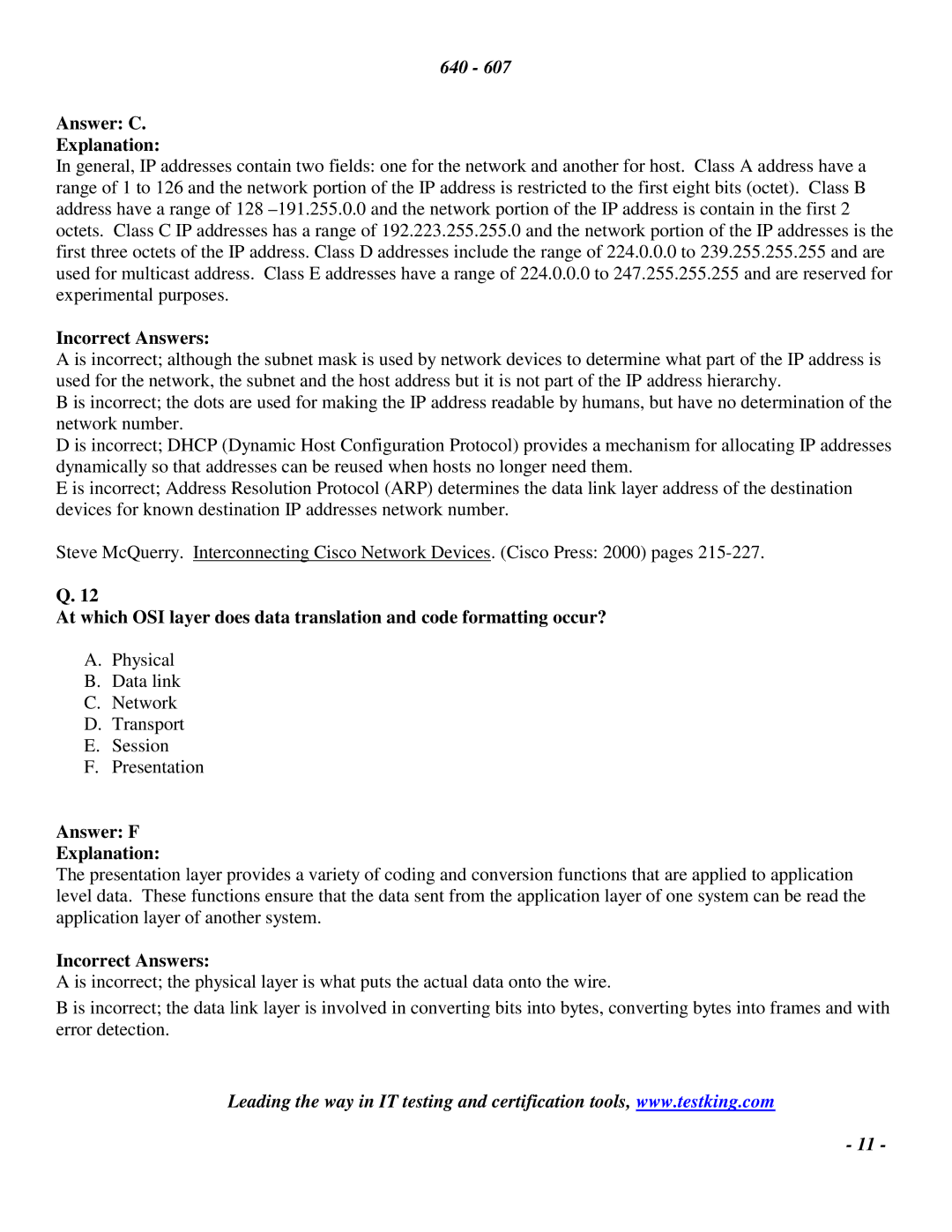640 - 607
Answer: C.
Explanation:
In general, IP addresses contain two fields: one for the network and another for host. Class A address have a range of 1 to 126 and the network portion of the IP address is restricted to the first eight bits (octet). Class B address have a range of 128
Incorrect Answers:
A is incorrect; although the subnet mask is used by network devices to determine what part of the IP address is used for the network, the subnet and the host address but it is not part of the IP address hierarchy.
B is incorrect; the dots are used for making the IP address readable by humans, but have no determination of the network number.
D is incorrect; DHCP (Dynamic Host Configuration Protocol) provides a mechanism for allocating IP addresses dynamically so that addresses can be reused when hosts no longer need them.
E is incorrect; Address Resolution Protocol (ARP) determines the data link layer address of the destination devices for known destination IP addresses network number.
Steve McQuerry. Interconnecting Cisco Network Devices. (Cisco Press: 2000) pages
Q. 12
At which OSI layer does data translation and code formatting occur?
A.Physical
B.Data link
C.Network
D.Transport
E.Session
F.Presentation
Answer: F
Explanation:
The presentation layer provides a variety of coding and conversion functions that are applied to application level data. These functions ensure that the data sent from the application layer of one system can be read the application layer of another system.
Incorrect Answers:
A is incorrect; the physical layer is what puts the actual data onto the wire.
B is incorrect; the data link layer is involved in converting bits into bytes, converting bytes into frames and with error detection.
Leading the way in IT testing and certification tools, www.testking.com
- 11 -
